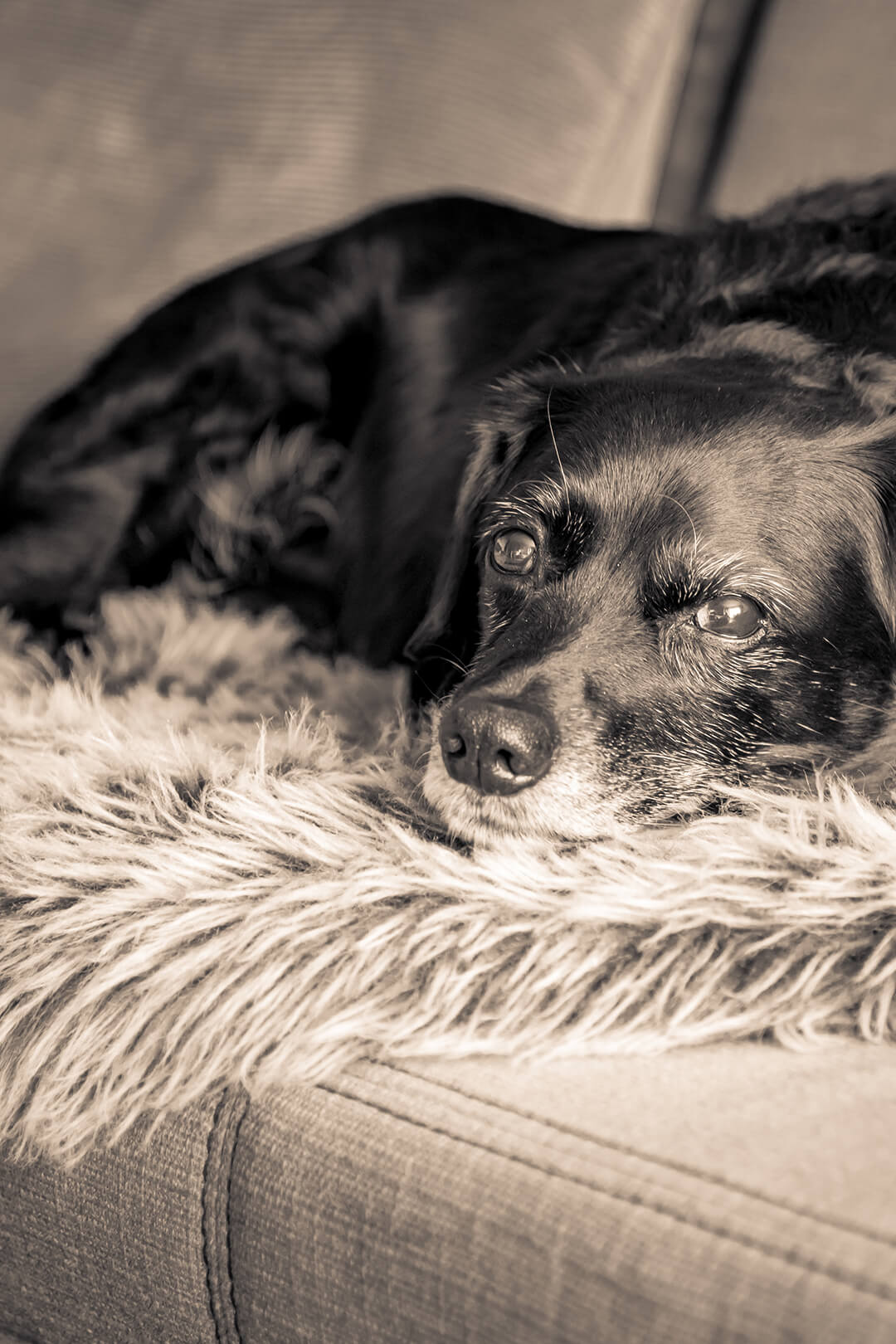As global health improves, people are living longer lives. This same phenomenon is happening with our pets, too. Veterinary medicine has advanced to the point that just about any medical intervention that you can get is available to your pet. As we see dogs and cats living to ever higher years, there are some things that pet owners can do to help them live those years safely and in comfort. As things change for them as they age, we can adapt their environment to suit their needs, often without too much effort or inconvenience on ours.
Here are some tips for helping your senior dog or cat – a big dog older than 8, or a small dog or cat older than 12 -around the house.
- Keep the weight off! As joints lose mobility, handling excess pounds can really make getting around difficult. And as metabolism slows with age, it can be easy to pack on extra doggy or kitty weight. Make sure that your dog’s or cat’s weight stays stable. Incorporate an exercise regimen to keep muscle mass high and pounds low.
- Ramp up to bed: Dogs love to lie on the bed with you, but sometimes leaping onto the mattress just isn’t as easy at 12 as it was at 2. Depending on how you feel about dogs on the bed, getting a ramp or set of stairs to sit beside the bed or couch can help them get up there. Likewise, an elevated food bowl can make it easier for dogs with stiff necks to get to their food.
- Don’t rearrange the furniture: As dogs and cats age, their eyesight can start to lose sharpness, just as it does for us pet parents. In some cases, indoor dogs can go gradually blind but learn to navigate by instinctively knowing where the landmarks in the house are, such as a couch or TV stand. Pet parents sometimes first find out that their pet has gone blind when they notice the pet bumping into objects after rearranging the living room. Try and keep the redecorating to a minimum if you have a senior pet with vision issues in the house — they’ll appreciate it! Make sure stairways and open gates are securely protected and latched so your dog can’t fall or roam. Dogs are like human toddlers for their entire lives — if there’s trouble, they’ll find it! It’s your job to keep them safe from harm.
- Practice prevention — see your vet with your senior pet! Old age is when most medical maladies strike, and knowing a disease is there early means you’re one step closer to curing it or managing it successfully. Older dogs and cats should have a routine wellness exam with lab tests twice a year. Those with established medical issues like diabetes or cancer will need rechecks more often. Watch out for unexplained weight loss or changes in appetite. See your trusted family veterinarian at the first sign of trouble.
The later years of life can be a great time together for you and your pet. Take steps today to make sure that they live out their days with as much fun, safety and love as you can!


